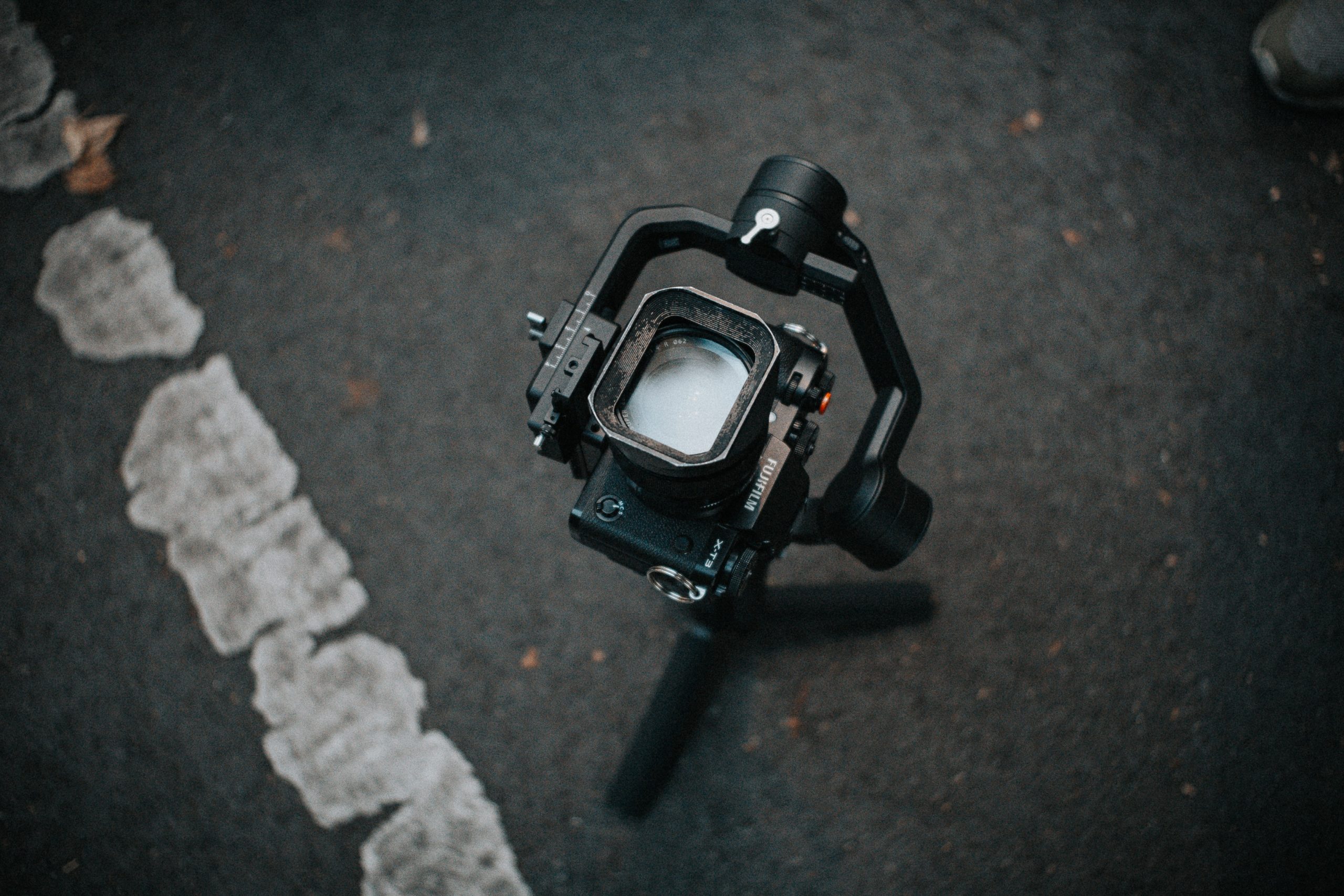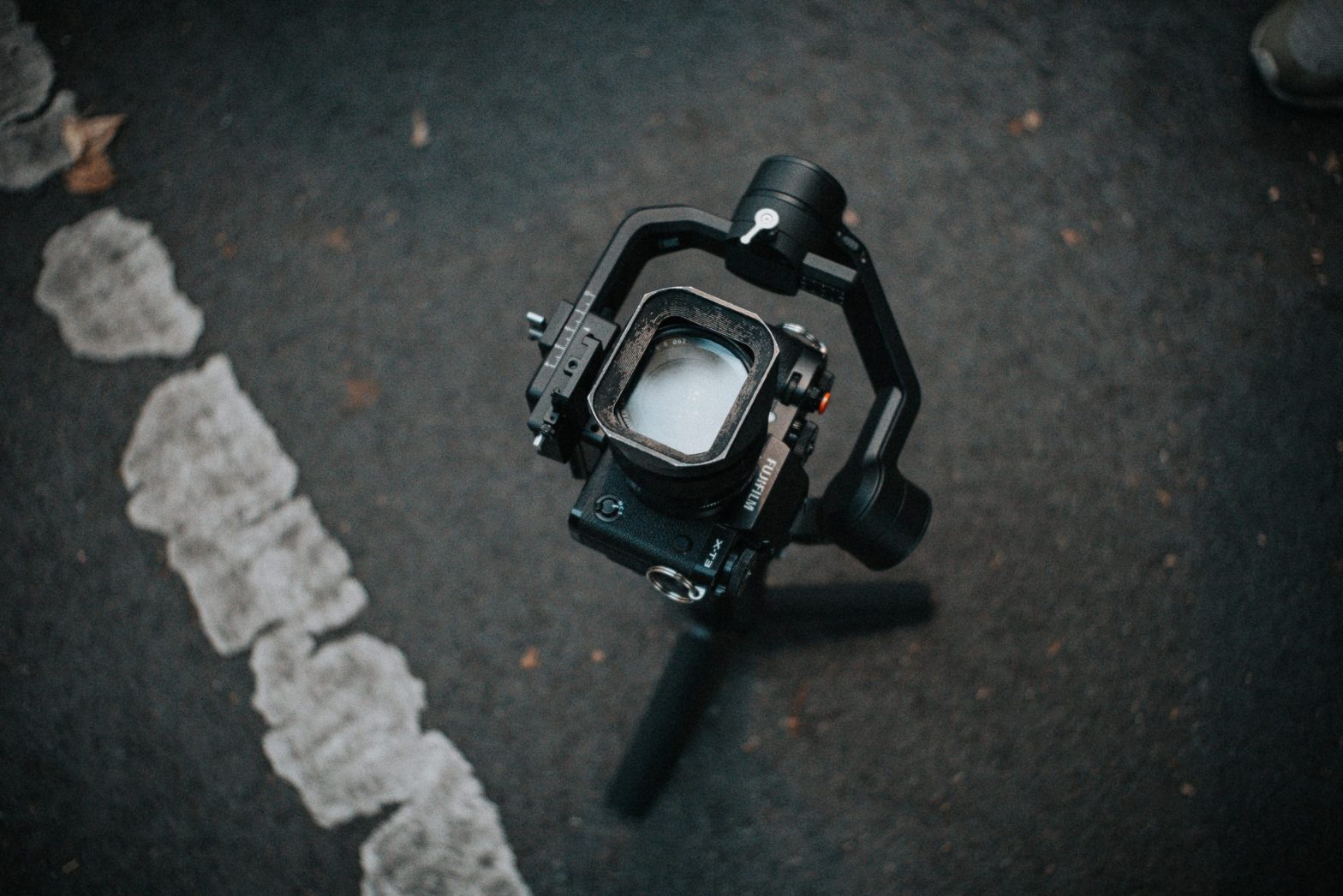
Maybe it’s your first project, or you drank too much coffee before rushing to the shooting place. Either way, they both affect my hand’s stability.
This is why brands have come up with gimbals to tackle your issue with a camera shake, allowing us the flexibility to work on your on-the-go shoots with little to no hassle.
Gimbals make your videos look very smooth and give them a cinematic effect. Having one at your side will make your editing work a lot easier as you don’t have to zoom in on the footage to make it look jitter-free.
So, I thought of finding the best gimbals for mirrorless cameras (since I’ve been using one), and here’s what I found:
- Zhiyun Weebill-S
- Pilotfly H2 3-Axis Handheld Gimbal Stabilizer
- Moza Lite 2 Premium Handheld Gimbal
- DJI Ronin-S
- Benro RedDog R1 Handheld Gimbal
Each of the gimbals I’ve found has its own strengths. Zhiyun Weebill-S is beginner-friendly, Pilotfly H2 is perfect for whole-day shoots, Moza Lite 2 is suitable for hardcore videographers that need various compatibilities, DJI Ronin-S is the best single-handed gimbal, and the Bendro RedDog Rq is your go-to pro gimbal for a small-sized camera.
Why you might need a gimbal
A gimbal is a filming gadget containing motors and sensors that allows your digital camera to pivot seamlessly along one axis. 3-axis gimbals are the most prevalent these days. They help you capture seamless, smooth footage while on the go by stabilizing your camera while you tilt, pan, and roll.
As a videographer, I would highly encourage beginners to invest in gimbals. I would really consider them as essential gear in my filmmaking kit. Gimbals help take still photos from awkward angles, but they’re crucial for filmmakers. With a gimbal, you can film handheld and be confident that your footage will be stable and blur-free. Consider it the finest approach to keep a camera stable even without a tripod.
It’s a whole new experience when you jump from handheld videos (with your shaky hands) to stabilized footage from a gimbal. Making videos is a lot easier and less stressful, especially when you proceed to edit your videos. It saves up time and effort from doing second takes. And, of course, it saves up storage space in your memory card since you would be getting more of those “perfect-1-take-only” shots while filming.
It’s worth investing in a gimbal if you’re an emerging or professional filmmaker who values video quality. Most especially if you do travel vlogs, it’s a hit to have a gimbal in your bag. Without one, you’ll be restricted in your movements and may have to compromise for less exciting photos. It’s also possible that you’ll wind up with shaky footage. The idea is to capture stable footage unless you’re purposely shooting in a “raw” way (such as for documentaries).
With that in mind, let’s proceed to a more detailed view of each gimbal.
1.Zhiyun Weebill-S
Price: $339.00
Features:
- Max Load capacity: 3.5 kilograms
- Dimensions: 156 x 171 x 338 mm
- Weight: 926 grams, if you’ll exclude the battery
- Battery life: 12-14 hours
If you’re just starting your journey with videos and filmmaking, this is the best gimbal for you!
The Weebill-S performs a fantastic job with full-frame (or smaller) mirrorless cameras. It’s a 3-axis gimbal with six modes: following mode, lock mode, point of view mode, vortex, and go mode.
It takes a bit of time to get used to how to access all of the configurations and which modes work best for the sort of video you would like to make, but it produces where it matters by equipping seamless, entertaining video that’s a significant upgrade from filming handheld and more dynamic than footage shot on a tripod.
The Zhiyun Weebill-S can also operate an attached camera through a wired connection, and available accessories include focus and zoom control, as well as remote control and picture transmission. There’s also an application (ZY Play) that allows users to access via a smartphone to alter essential settings, operate the gimbal, and upgrade the software.
[embedded content][embedded content]
2.Pilotfly H2 3-Axis Handheld Gimbal Stabilizer
Price: $550
Features:
- Load capacity: 4.85lbs or 2.2kg
- Dimensions: 370 x 190 x 190mm
- Weight: 2.6lbs or equivalent to 1.2kg (batteries included)
- Battery life: 26 hours
If you’re one of the many people who genuinely enjoy a one-handed operation, then this gimbal is for you!
It is a handheld gimbal stabilizer that shows off a 32-bit technology, two integrated IMU sensors, and 3 Motor Control Units (MCU) for an efficient and powerful shooting encounter.
The Pilotfly H2 has an unrestricted panning at 360°, a down tilt at 100°, 220° uptilt, and 240° of right roll that was further strengthened with its 0.01-0.04° control precision.
Pilotfly H2 guaranteed that it was made for the user’s comfort by adding in the battery/power LED indicator, built-in 4-way joystick, and a mode button. Moreover, a 1/4-inch screw hole was placed on each side and the gimbal’s bottom to ensure that it could quickly grasp other tools, like microphones and external displays.
You could even mount this on sliders, extension poles, jibs, and tripods which will lead you to endless possibilities in shooting experiences. But let’s not forget that the actual selling point of this gimbal is none other than its 26 hours lifespan, which would tolerate projects that demand long hours of work.
[embedded content][embedded content]
3.Moza Lite 2 Premium Handheld Gimbal
Price: $1099
Features:
- Load capacity: 5kg or 11lbs
- Dimensions: 500 x 250 x 350mm
- Weight: 2.2kg or 4.85lbs
- Battery life: Up to 8 hours
Are you after a robust gimbal that could serve you with maximum precision? If so, then you’ll get along with Moza Lite 2 just fine.
Equipped with Advanced FOC Algorithms, you’ll be sure to have a smooth shooting experience with this camera’s incredible precision.
Although it is compact and weighs less than its competitors, the unit could have a maximum load of 11 pounds compatible with mirrorless cameras, compact cinema cameras, and DLSRs. Beyond that, the brand also has included modular designs, which permit three setups that don’t require tools. It comes in a huge box with almost everything.
As a result, it became convenient for videographers who need to keep up with the fast pace of production without wasting too much time assembling and adjusting the camera’s configuration. Its compatibility with many devices such as drones, cranes, and rigs is a plus.
As if Moza Lite 2 isn’t powerful enough, an integrated overcharge and over-depletion protection were also introduced in the model, giving you ample time for uninterrupted performance.
The downside is, if you’re not a pro in balancing and setting up a gimbal like this, you would probably be frustrated or confused. It does take time to learn and experiment with how to properly set it up with your camera.
[embedded content][embedded content]
4.DJI Ronin-S
Price: $389
Features:
- Load capacity: 3.6kg or 7.94lbs
- Dimensions: 590 x 293 x 256mm
- Weight: 1.86kg or equivalent to 4.1 lb
- Battery life: Maximum of 12 hours
If you’re looking for a formidable single-hand gimbal for your needs, you’ll be in great hands with DJI Ronin-S.
This unit will allow you to capture steady footage while on the move and was designed as modular and detachable equipment for more accessible storage as well as present new shooting possibilities.
Other than this, the gimbal has a quick-release plate that was partnered with a standard industry design to support a simple camera mounting. However, you are also free to enable its Auto-Tune tool if you’re aiming for optimal torque control.
A Focus Wheel was integrated within the Ronin-S that could utilize its cable for focus pulls purposes, and it’s your choice to add an external motor that could secure your lenses to work with the stabilizer. Based on its LED lights, multiple accessory mounts, external monitors, and other camera equipment tools, it’s hard not to say that DJI Ronin-S is indeed a versatile gimbal for mirrorless camera users.
[embedded content][embedded content]
5.Benro RedDog R1 Handheld Stabilizer
Price: $249.95
Features:
- • Load capacity: 1.8 kilograms (4 lb)
- • Dimensions: 156 x 171 x 338 mm
- • Weight: 1.97 lb or equivalent to 879 grams, if you’ll exclude the battery
- • Battery life: Up to 12 hours
The RedDog R1 is a motorized gimbal stabilizer hosting the top specs and accessories for professional videographers without complex settings and only offers a specific performance at your command.
The unit permits you to capture impressive footage and balance solid design features, price, and overall quality.
It’s a match for users who need a simple tool to accompany their small to medium-sized mirrorless cameras. Plus, the brand made sure that it’ll be suitable for Android and iOS devices, along with quick calibration and other nifty specs we definitely loved!
We could guarantee that this gimbal’s run time surprised us. It could even last for several days without requiring a recharge. What gave it another edge over its competitors, though, is its battery’s swappable trait if you’ve noticed that your current ones are running flat.
Its payload may be light, but when in use, you could still say that RedDog R1 is quite forgiving once you get used to wiggling some space around the max payload.
[embedded content][embedded content]
To conclude…
The trick in using gimbals is to set it up properly. Gimbals work by balancing the load of your camera and your movements. You would need to use lenses that utilize internal focus and zooming so it doesn’t disrupt the weight of your camera. Zooming in and out while shooting with a gimbal would be more convenient with the right camera lens.
Among the five brands I’ve listed, I found the Zhiyun Weebill-S perfect for my needs. I think it would be great as an all-around gimbal with a simple interface with lots of choices for gimbal modes and external connectivity. In addition, it has long battery life that would probably last a whole day of vlogging. Lastly, it fits my tight budget.
As a video enthusiast, the biggest challenge for me is investing in equipment. I would admit that my passion for creating videos is a luxury, but it has taught me to save up time, effort, and money as well. If you’re in the same situation as me, continue the hustle! Let’s outdo ourselves and make the best videos while we still can! Nothing beats competing with yourself, right?
